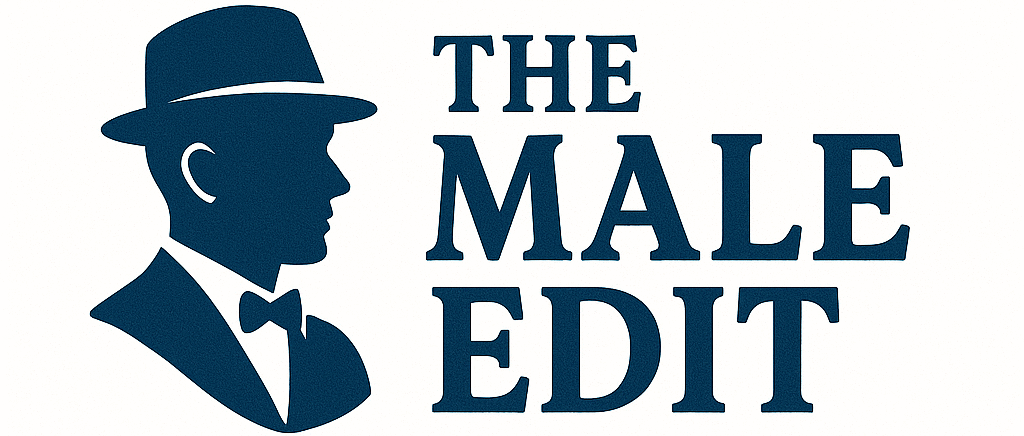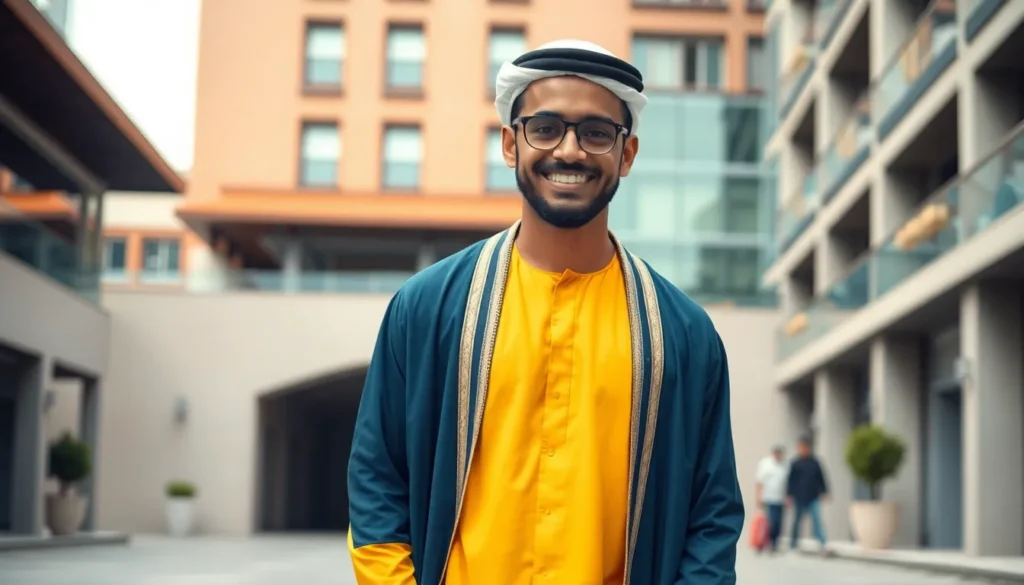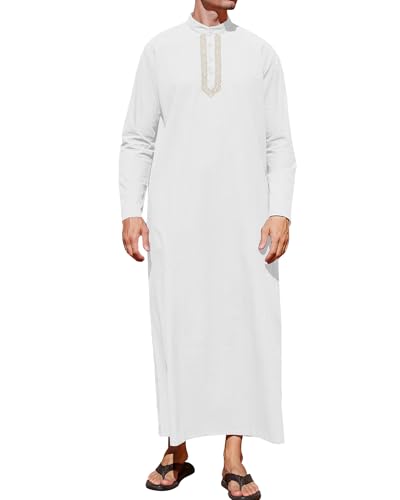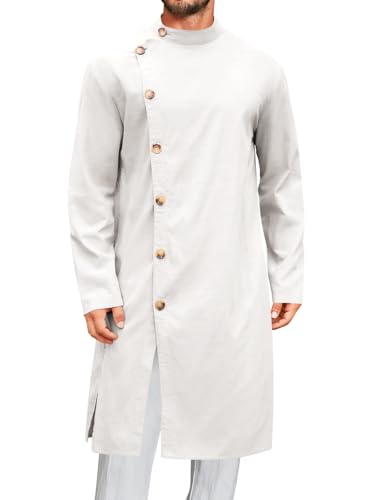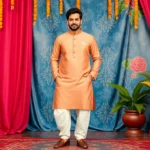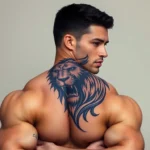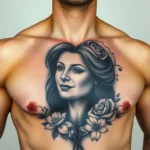The Arabic jubba has evolved from a traditional garment into a sophisticated statement piece that combines cultural heritage with contemporary style. We’ve witnessed this timeless robe transform the wardrobes of modern men who appreciate both comfort and elegance in their daily wear.
Today’s jubba designs offer incredible versatility that works just as well for formal occasions as it does for casual gatherings. We’re seeing innovative cuts, premium fabrics, and intricate embellishments that honor traditional craftsmanship while meeting modern expectations for fit and function.
Whether you’re looking to embrace your cultural roots or simply want to add a distinctive piece to your wardrobe, understanding the various jubba styles available can help you make the perfect choice. We’ll explore the most popular designs, fabric options, and styling tips that’ll have you wearing your jubba with confidence and pride.
Traditional Arabic Jubba Designs That Never Go Out of Style
Classic designs remain the foundation of authentic Arabic menswear, offering timeless elegance that transcends seasonal trends. These traditional jubba styles represent centuries of cultural heritage while maintaining their relevance in modern wardrobes.
Classic White Cotton Jubba
White cotton jubbas represent the purest form of traditional Arabic menswear, embodying simplicity and spiritual significance across Middle Eastern cultures. Crafted from breathable cotton fabric, these garments feature a loose-fitting silhouette that provides comfort in warm climates while maintaining dignified appearance.
Traditional white jubbas typically showcase minimal embellishments, focusing instead on impeccable tailoring and quality construction. Religious ceremonies, prayer gatherings, and formal occasions often call for this pristine design, making it an essential piece in every man’s traditional wardrobe.
Styling versatility makes white cotton jubbas suitable for various settings, from mosque visits to family celebrations. We recommend pairing these garments with traditional leather sandals and a matching prayer cap for complete authenticity.
Beige Linen Traditional Cut
Beige linen jubbas offer sophisticated earth tones that complement diverse skin complexions while providing superior breathability for hot weather conditions. Natural linen fabric creates elegant draping effects that enhance the traditional silhouette without compromising comfort or mobility.
Traditional cut features include wide sleeves, ankle-length hemlines, and subtle side slits that allow for easy movement during daily activities. Neutral beige coloring works exceptionally well for business meetings, cultural events, and semi-formal gatherings where understated elegance is preferred.
Premium linen construction ensures durability while developing a beautiful patina over time, making these jubbas increasingly attractive with regular wear. Desert climates particularly suit this fabric choice, as linen naturally regulates body temperature throughout the day.
Navy Blue Formal Jubba
Navy blue formal jubbas command respect in professional and ceremonial settings, combining deep color sophistication with traditional Arabian craftsmanship. Rich navy fabric provides a striking alternative to lighter colors while maintaining the conservative aesthetic expected in formal environments.
Formal design elements include structured shoulders, precise stitching details, and often feature decorative buttons or subtle embroidery along the neckline and cuffs. Wedding ceremonies, business conferences, and diplomatic functions frequently showcase these distinguished garments as appropriate formal attire.
Color depth allows navy jubbas to pair beautifully with gold accessories like watches, rings, and traditional daggers, creating a refined appearance that honors cultural traditions. Evening events particularly suit this darker tone, as it photographs well under artificial lighting conditions.
Modern Arabic Jubba Designs for Contemporary Men
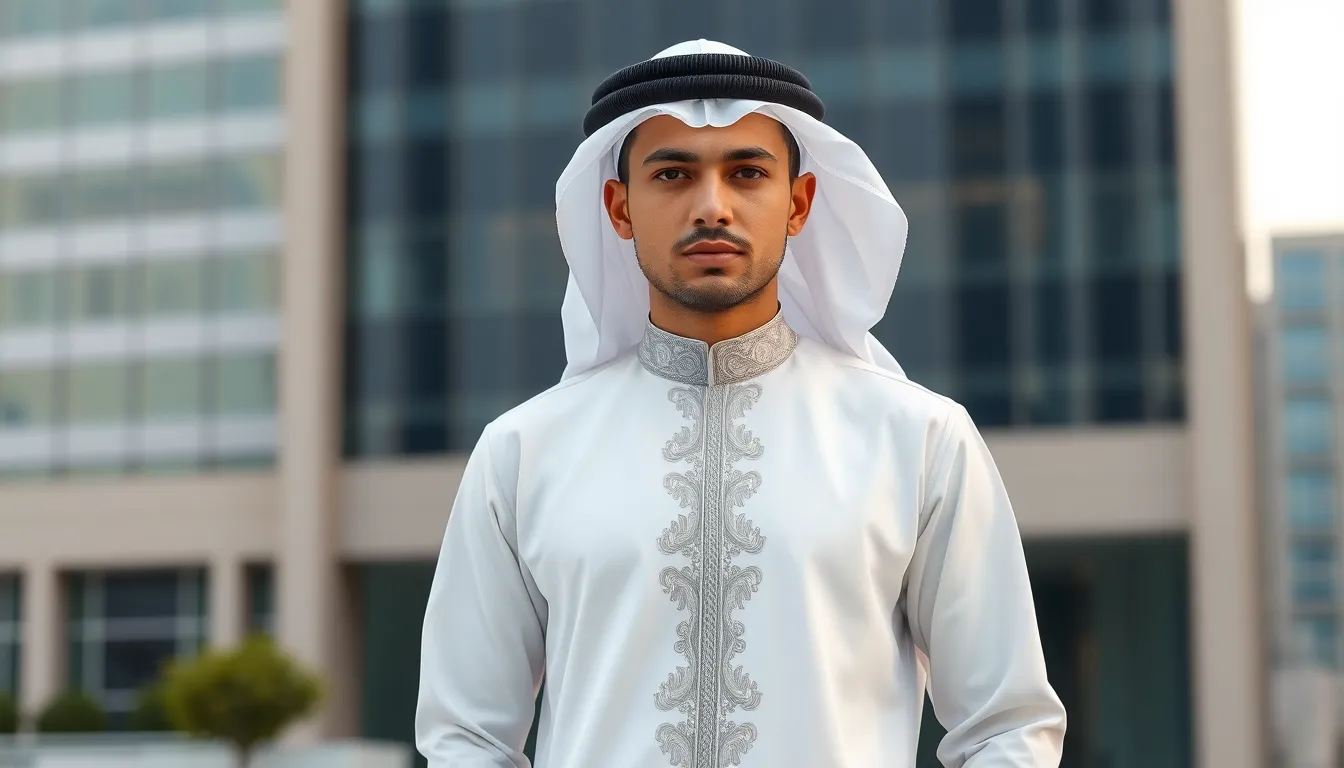
Today’s Arabic jubba designs embrace innovation while preserving cultural authenticity. We’re seeing remarkable transformations that cater to modern men’s lifestyle needs without compromising traditional values.
Slim-Fit Jubba Styles
Slim-fit jubba styles represent the most important evolution in contemporary Arabic menswear. These streamlined designs replace the traditional loose cut with customized silhouettes that flatter the modern male physique while maintaining the essential modesty and comfort that define authentic jubba construction.
We observe that contemporary tailors focus on creating clean lines that enhance rather than hide the wearer’s natural form. The refined cuts provide better movement and a more professional appearance suitable for business environments and social gatherings. Modern slim-fit designs maintain adequate room for prayer movements and daily activities while presenting a sophisticated aesthetic that appeals to younger generations.
Contemporary jubba manufacturers emphasize precision in measurements to achieve the perfect balance between fitted appearance and traditional functionality. The result creates garments that transition seamlessly from mosque attendance to professional meetings without requiring wardrobe changes.
Designer Collar Variations
Designer collar variations have become the defining feature that distinguishes modern jubbas from their traditional counterparts. Contemporary designers experiment with collar shapes, heights, and decorative elements to create distinctive looks that reflect personal style preferences.
We notice that rounded collars offer subtle elegance suitable for daily wear, while structured collars with clean lines complement formal occasions and professional settings. Decorative elements like embroidered piping, contrasting fabrics, and geometric patterns transform simple necklines into statement features that enhance the overall garment appeal.
Modern collar designs often incorporate functional elements such as reinforced stitching and comfortable neckline proportions that prevent irritation during extended wear. These thoughtful details demonstrate how contemporary jubba makers prioritize both aesthetic appeal and wearer comfort in their design philosophy.
Fusion Embroidery Patterns
Fusion embroidery patterns showcase the artistic evolution of Arabic jubba decoration through innovative combinations of traditional motifs and contemporary design elements. These detailed applications typically appear on cuffs, collars, and chest areas where they create focal points that elevate the garment’s visual impact.
We see designers incorporating geometric abstractions alongside classic Arabic calligraphy and nature-inspired patterns to create unique visual narratives. The embroidery work often features metallic threads, contrasting colors, and dimensional techniques that add texture and depth to the fabric surface.
Contemporary embroidery applications serve multiple purposes beyond decoration, including reinforcement of high-stress areas and creation of subtle branding elements that identify premium jubba collections. These patterns make modern jubbas suitable for special occasions like weddings and official events where detailed craftsmanship demonstrates respect for the occasion’s significance.
Formal Arabic Jubba Designs for Special Occasions
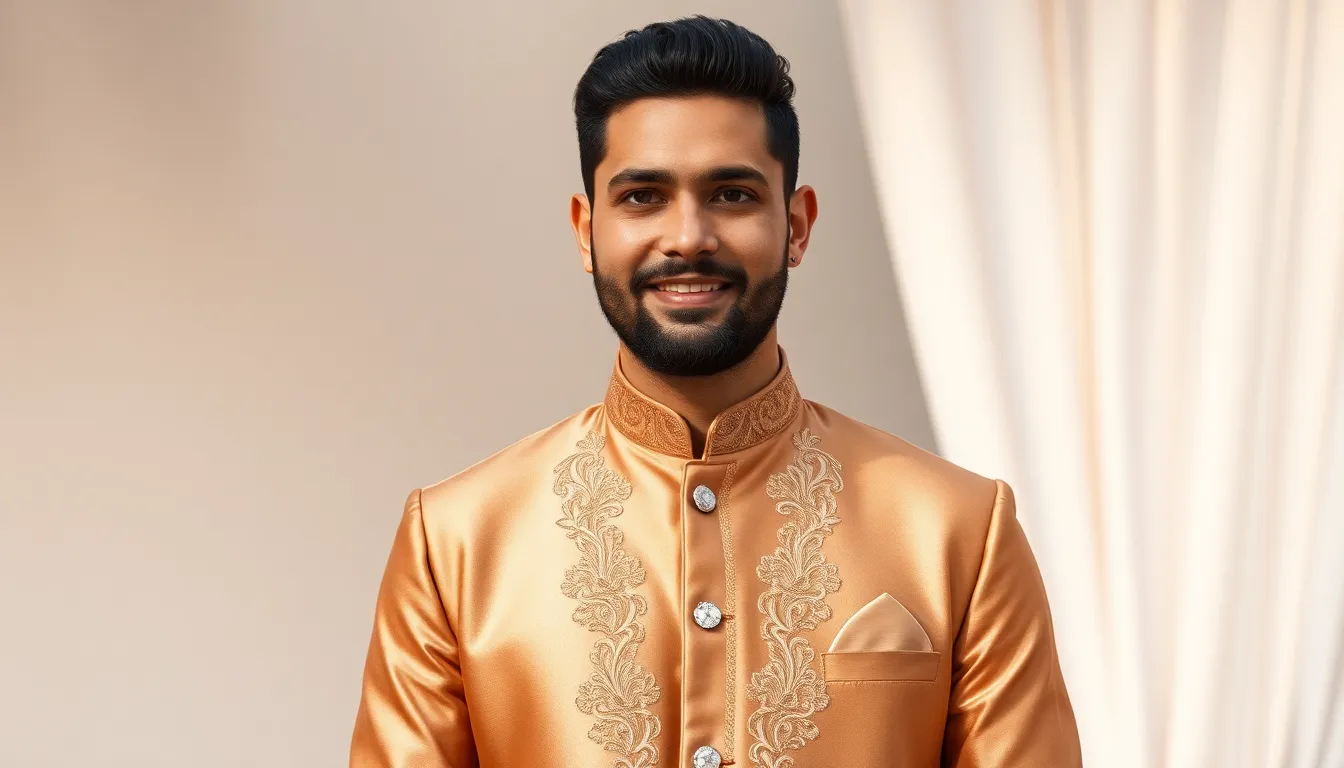
Special occasions demand elevated jubba designs that honor tradition while meeting the formality requirements of important events. We’ve curated the most sophisticated formal styles that seamlessly blend cultural authenticity with occasion-appropriate elegance.
Wedding Ceremony Jubbas
Wedding ceremony jubbas showcase intricate tailoring and subtle embellishments that elevate your special day appearance. These ankle-length robes maintain traditional lines while incorporating finer fabrics and detailed stitching that honor the occasion’s significance. Customization remains popular among grooms who want unique elements that reflect their personal style and cultural heritage.
Premium fabric selections distinguish wedding jubbas from everyday wear. We often see silk blends, fine cotton, and high-quality linen that drape beautifully and photograph well. These materials provide the refined texture and appearance that wedding photography demands while ensuring comfort throughout long ceremony hours.
Subtle embellishments add sophistication without overwhelming the garment’s modest character. Delicate embroidery along the collar or cuffs creates visual interest while respecting traditional design principles. These details catch light beautifully in wedding photography and add a layer of craftsmanship that makes the garment truly special.
Eid Festival Designs
Eid festival designs introduce vibrant elements that celebrate the joy of religious holidays. Fresh and lively patterns mark these celebratory occasions while maintaining the jubba’s traditional structure and modesty requirements. Striped designs with vertical or horizontal lines in varying widths and colors have become particularly favored for Eid celebrations.
Color variations expand beyond traditional solid hues during Eid festivities. We see more adventurous color combinations that still respect cultural norms while expressing the festive spirit. These celebratory colors often include rich jewel tones, elegant pastels, and striking contrasts that reflect the happiness of the occasion.
Delicate patterns and stripes add modern flair to traditional silhouettes. Contemporary Eid jubbas might feature geometric patterns, subtle florals, or artistic stripes that create visual movement. These design elements respect cultural roots while embracing modern aesthetic preferences that appeal to younger generations.
Business Meeting Appropriate Styles
Business meeting appropriate styles prioritize clean lines and understated elegance that communicate professionalism. Simple solid color jubbas in white, black, or dark navy create the refined appearance that business contexts require. These colors coordinate easily with other professional attire and project the dignity that formal business settings demand.
Solid color selections avoid distractions while maintaining cultural authenticity. We recommend sticking to classic hues that won’t overwhelm meeting participants or detract from professional discussions. White jubbas project cleanliness and spiritual awareness, while dark colors convey authority and seriousness appropriate for business negotiations.
Refined silhouettes ensure professional presentation without sacrificing comfort. The neat, customized fit communicates respect for business protocols while allowing full range of movement during meetings. These jubbas avoid decorative elements that could appear unprofessional, instead focusing on perfect proportions and quality construction that speaks to attention to detail.
Casual Arabic Jubba Designs for Everyday Wear
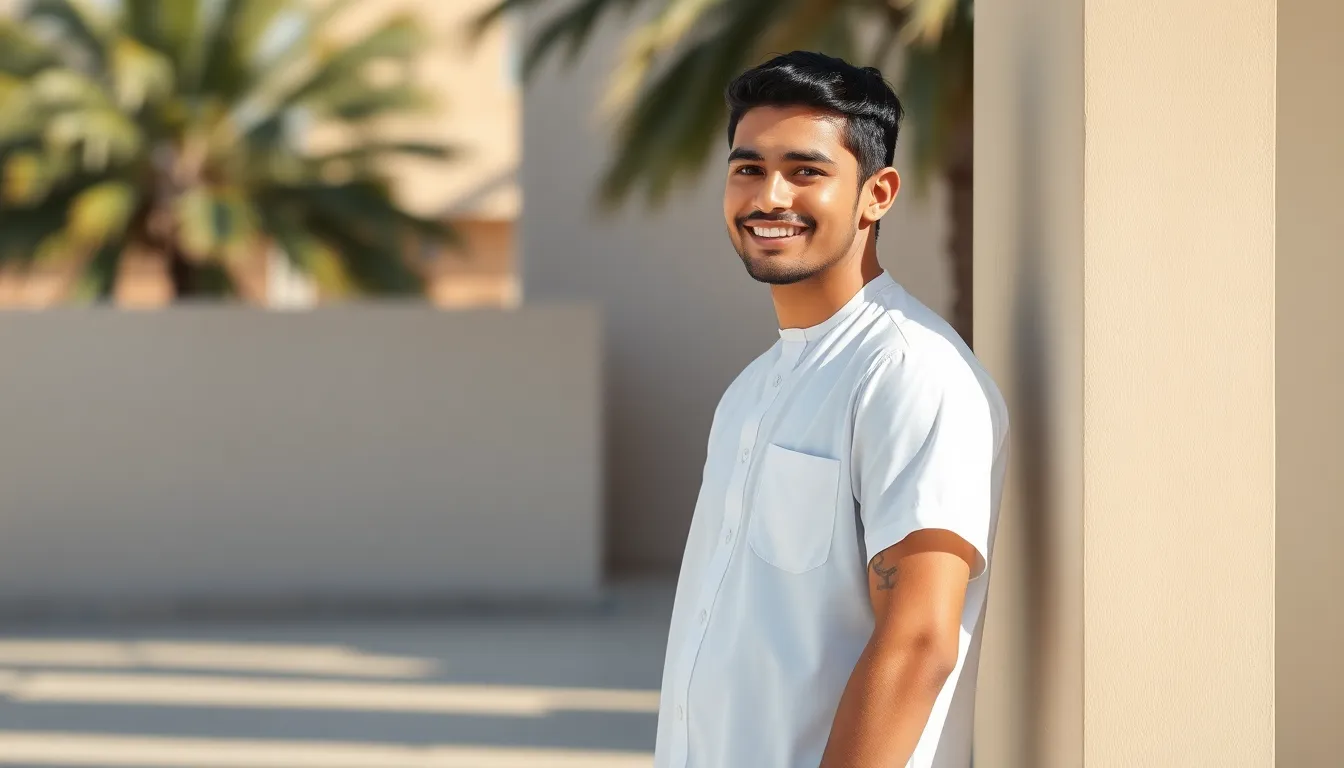
Moving beyond formal occasions, we explore how casual Arabic jubbas seamlessly integrate into daily life while maintaining their cultural significance. These versatile designs emphasize comfort and practicality without sacrificing the elegant modesty that defines traditional jubba styling.
Lightweight Summer Fabrics
Cotton and linen emerge as the preferred materials for everyday jubba construction, offering exceptional breathability during warmer months. Natural fiber blends provide excellent air circulation while reducing heat retention, ensuring comfort throughout extended wear periods. We recommend lightweight cotton jubbas for their moisture-wicking properties and easy maintenance, making them ideal for daily activities and work environments.
Breathable fabrics maintain the jubba’s neat appearance even in hot climates, allowing wearers to stay cool while preserving the garment’s elegant silhouette. These summer-ready materials resist wrinkles and maintain their shape, reducing the need for frequent pressing while delivering consistent comfort.
Short-Sleeve Jubba Options
Contemporary jubba designs now include short-sleeve variations that cater to younger men seeking relaxed weekend styling options. These modern interpretations maintain the jubba’s core design elements while improving comfort and ease of movement during casual activities. Short-sleeve jubbas work particularly well in hot weather conditions or informal settings where traditional long sleeves might feel restrictive.
Younger generations appreciate these adapted designs for their practicality during leisure time, weekend outings, or casual gatherings. The shortened sleeves provide freedom of movement while preserving the jubba’s modest coverage and cultural authenticity.
Relaxed Fit Weekend Styles
Looser cut jubbas prioritize comfort for leisure wear without compromising the garment’s dignified appearance. These relaxed fits feature soft fabrics and minimal decoration, aligning perfectly with casual lifestyle preferences while retaining deep cultural significance. Weekend jubbas often showcase simple solid colors or subtle stripe patterns that complement various casual styling approaches.
Relaxed fit designs accommodate extended periods of wear during family gatherings, weekend prayers, or informal social events. The generous cut ensures unrestricted movement while maintaining the jubba’s traditional modesty requirements, making these styles perfect for men who value both comfort and cultural expression in their everyday wardrobe choices.
Luxury Arabic Jubba Designs with Premium Materials
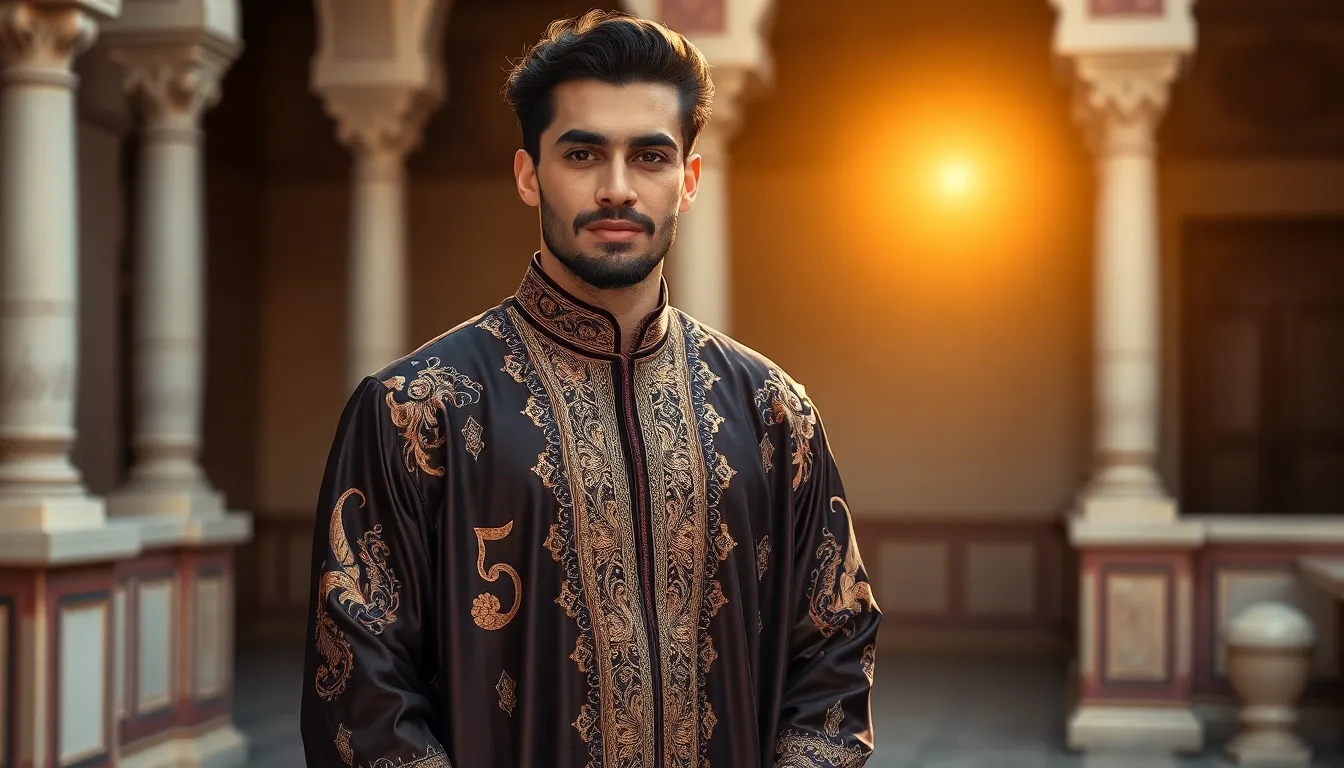
We’ve explored how modern jubbas adapt to various occasions, but luxury designs represent the pinnacle of craftsmanship and cultural artistry. These premium garments elevate the traditional ankle-length robe through exceptional materials and meticulous attention to detail.
Silk Embroidered Jubbas
Silk embroidered jubbas showcase the finest examples of traditional craftsmanship combined with luxurious aesthetics. Master artisans create intricate patterns using silk threads that add subtle elegance without overwhelming the garment’s modest foundation. These embellishments typically appear on collars, cuffs, and chest areas where they catch light beautifully and highlight the wearer’s refined taste.
Contemporary silk embroidery incorporates both traditional motifs and modern design elements to create unique visual narratives. We see geometric patterns, calligraphy inspired designs, and nature based motifs that tell stories through thread and needle. The silk threads create texture variations that add depth to solid colored jubbas while maintaining the garment’s cultural significance.
Premium silk embroidered jubbas require skilled hands and considerable time to complete, making each piece a work of art. Quality embroidery enhances the jubba’s overall structure while preserving its flowing silhouette and traditional ankle length design.
Gold Thread Detailing
Gold thread detailing represents the ultimate expression of luxury in Arabic jubba design, symbolizing status and sophistication across Gulf cultures. These precious embellishments appear as delicate threading along necklines, front plackets, and sleeve accents that create stunning visual interest. High end jubbas incorporate real gold threads that maintain their luster and elegance over time.
Artisans apply gold thread detailing with precision to ensure each element complements the jubba’s overall design aesthetic. We often find these accents combined with traditional patterns that honor cultural heritage while adding contemporary appeal. The golden threads create subtle contrasts against fabric colors, particularly striking on white, black, or navy blue jubbas.
Modern gold thread applications balance opulence with restraint, ensuring the garment remains appropriate for both formal occasions and religious observances. These details catch light naturally during movement, creating ever-changing visual effects that enhance the wearer’s presence without compromising traditional modesty principles.
High-End Fabric Combinations
High end fabric combinations distinguish luxury jubbas through their superior comfort, durability, and refined appearance suitable for formal occasions. Premium materials include silk blends that offer natural temperature regulation, fine cottons with exceptional softness, and natural linens that provide breathability in warmer climates. These fabric choices ensure the ankle length, long sleeve design remains comfortable throughout extended wear.
Contemporary luxury jubbas often feature fabric blends that combine multiple premium materials to maximize performance and aesthetic appeal. We see silk cotton blends that offer both elegance and practicality, while linen silk combinations provide structure with natural flow. These materials enhance the jubba’s traditional loose, flowing fit while adding sophistication through texture and drape.
Quality fabric selection impacts every aspect of the jubba wearing experience, from initial comfort to long term durability. Premium materials maintain their shape and color through repeated wear and cleaning, ensuring these investment pieces continue honoring cultural traditions while meeting modern lifestyle demands. The finest luxury jubbas use fabrics that age gracefully, developing character while preserving their essential qualities.
Regional Arabic Jubba Design Variations
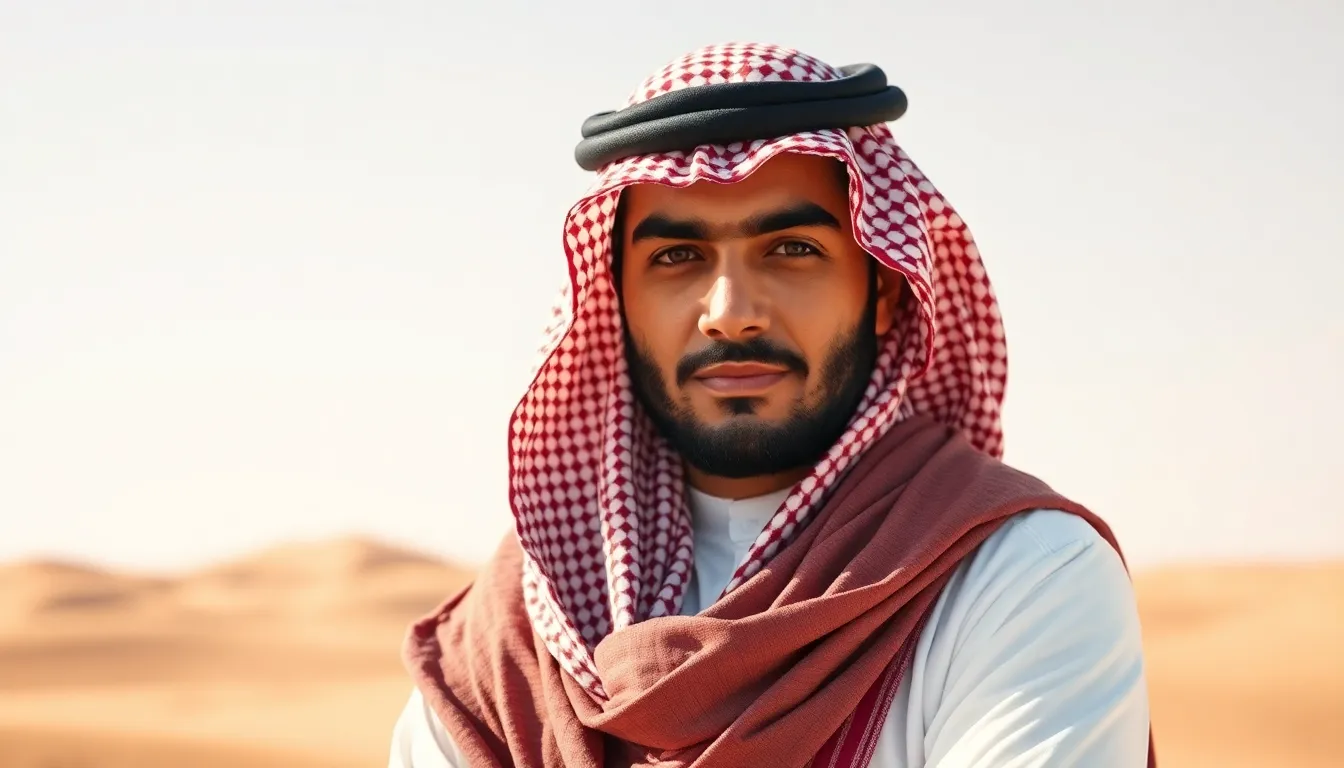
We observe distinct regional variations in Arabic jubba designs across the Arab industry, each reflecting unique cultural preferences and local traditions that have evolved over centuries.
Saudi Arabian Style Jubbas
Classic Straight Cut jubbas dominate Saudi Arabian men’s wardrobes as the most common and versatile style. These garments feature a loose fitting silhouette with a straight cut from waist down, emphasizing simplicity and modesty in their design approach. We find these jubbas typically worn with traditional headgear such as the agal and ghutrah or shumagh, making them suitable for both formal and informal occasions. Cotton and cotton blend fabrics are preferred materials that suit the hot climate while reflecting sunlight and maintaining comfort throughout the day.
Flared Design jubbas introduce elegance through their distinctive cut that flares from the waist down. This style maintains the traditional loose fit while offering a more fitted appearance at the upper body, creating a sophisticated silhouette perfect for weddings and special events. Embroidery often adorns these formal versions, particularly on collars, cuffs, and chest areas, adding decorative elements that enhance their ceremonial appeal.
| Saudi Jubba Style | Cut Type | Occasion | Fabric |
|---|---|---|---|
| Classic Straight | Straight from waist | Formal/Informal | Cotton/Cotton-blend |
| Flared Design | Flared from waist | Weddings/Special events | Cotton with embroidery |
Emirati Traditional Designs
Kanduras represent the distinctive Emirati approach to traditional men’s robes with several unique characteristics that set them apart from other regional styles. These garments typically feature no collars, creating a clean neckline that distinguishes them from Saudi or Omani robes. Placket fasteners use frog closures rather than conventional buttons, adding a distinctive functional and aesthetic element to the design.
Tassel details serve as signature elements of Emirati kanduras, with longer tassels reaching the waist level compared to other regional variations. Embroidery and stiffened collars or sleeves are added for formal occasions, allowing men to elevate their appearance while maintaining cultural authenticity. These design differences contribute significantly to regional identity and help distinguish Emirati traditional wear from neighboring countries.
Moroccan Inspired Patterns
Djellaba designs in Morocco and the Maghreb region showcase more ornate and patterned approaches compared to Arabian Peninsula styles. These garments, often referred to as jubbah or djellaba, emphasize decorative elements that align with local Berber and Arab aesthetics. Intricate embroidery and traditional patterns create visually distinct styles that reflect North African cultural motifs and artistic traditions.
Fabric variations in Moroccan jubbahs accommodate different climatic conditions, with heavier materials sometimes used depending on regional weather patterns. Rich embroidery work distinguishes these garments from the Gulf’s generally plainer jubbas, creating pieces that serve as wearable art. Moroccan inspired patterns often incorporate geometric designs and cultural symbols that tell stories of heritage and regional pride through their intricate details.
Color Options in Arabic Jubba Designs for Men
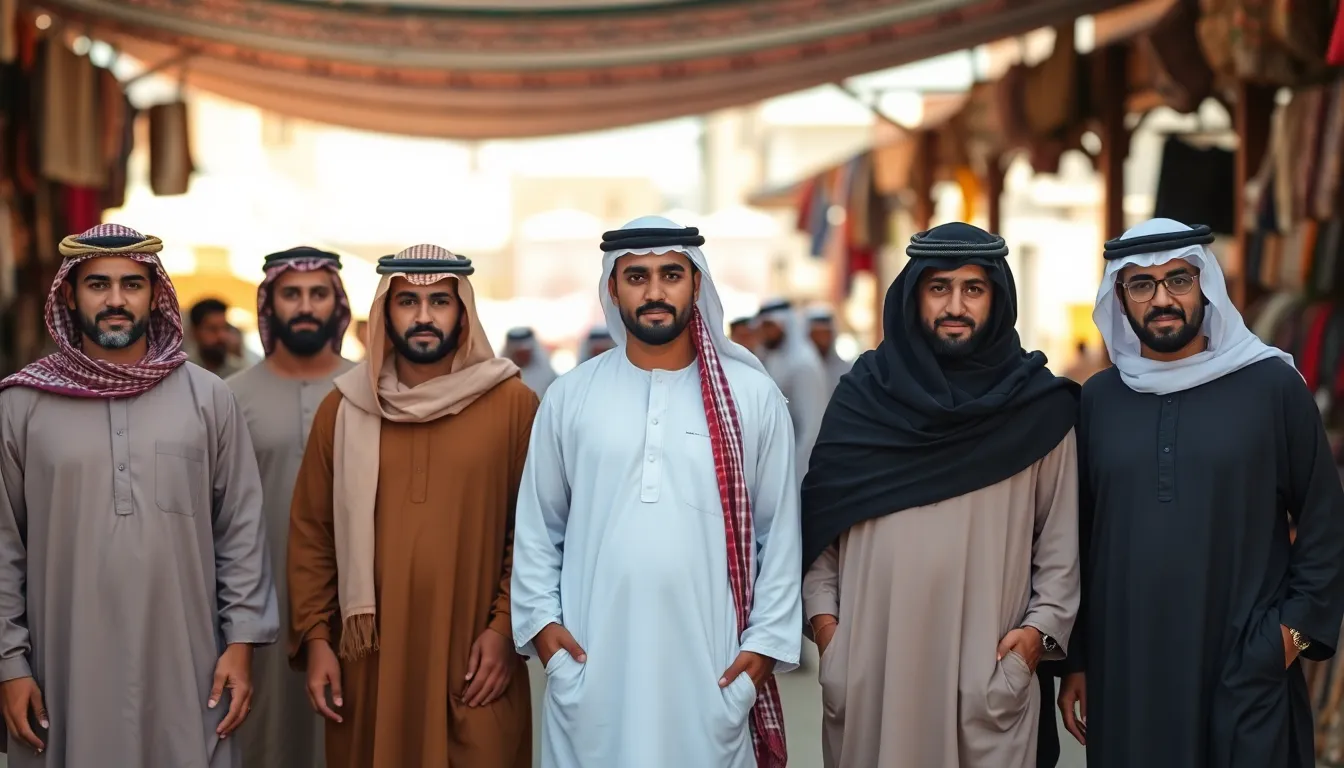
Color selection transforms the traditional jubba into a versatile wardrobe essential that adapts to various occasions and personal preferences. We’ve identified three primary color categories that define modern Arabic jubba design for men.
Earth Tone Palettes
Earth tone jubba designs embrace natural sophistication through carefully selected hues that reflect modesty and understated elegance. Beige jubbas offer versatility for daily wear while maintaining the traditional aesthetic of humility that defines Arabic menswear. Brown variations provide rich depth that complements various skin tones and seasonal styling preferences.
Tan colored jubbas serve as excellent transitional pieces between casual and semi-formal occasions. Olive green designs add subtle color variation while preserving the natural appeal that earth tones provide. These earthy shades embody the principles of modesty and simplicity that remain central to traditional Arabic dress codes.
Bold Statement Colors
Bold jubba colors break from conventional styling while respecting cultural traditions and maintaining appropriate modesty levels. Blue jubbas create striking visual impact for men seeking contemporary expression within traditional frameworks. Striped designs feature vertical or horizontal patterns with varying widths that add modern flair suitable for casual gatherings.
Pattern combinations in bold jubbas often incorporate multiple colors to create ever-changing visual interest without compromising traditional silhouettes. Modern designers integrate these statement colors thoughtfully to ensure they enhance rather than overshadow the jubba’s inherent elegance. Bold choices work particularly well for semi-formal events where personal style can shine through cultural authenticity.
Monochromatic Elegant Choices
Monochromatic jubbas represent timeless sophistication through single color designs that project elegance and versatility across multiple occasions. White jubbas remain the most popular choice across Arab countries, symbolizing purity and formality while offering endless styling possibilities. Black designs provide commanding presence for exact regional preferences and formal occasions.
Navy blue jubbas offer professional versatility that works seamlessly in business and formal settings. Solid color designs prove straightforward to coordinate with accessories while maintaining the modest aesthetic that defines traditional Arabic menswear. These monochrome staples form the foundation of any well-curated jubba wardrobe because they project understated confidence and cultural respect.
Fabric Choices That Define Arabic Jubba Quality
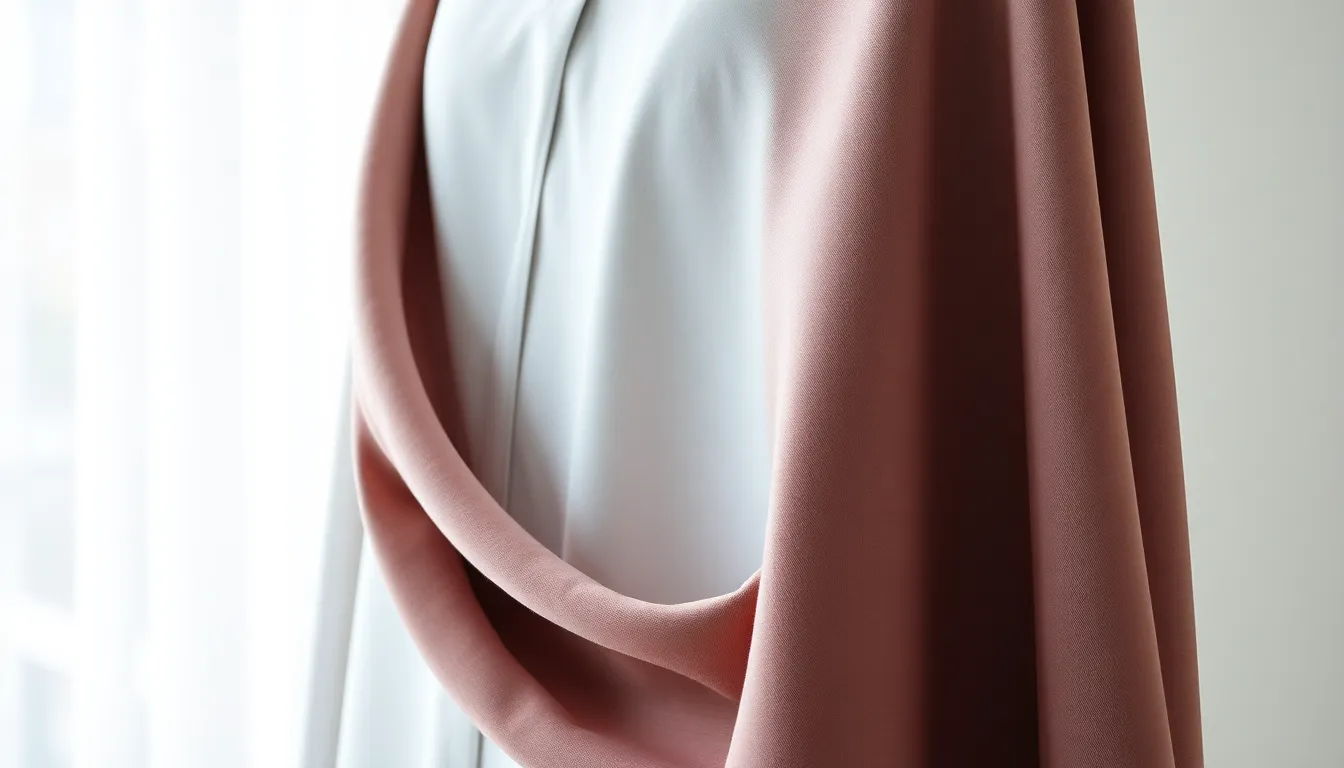
We’ve explored various design styles and regional variations, but the foundation of any exceptional Arabic jubba lies in its fabric selection. Quality materials not only determine comfort and durability but also affect how the garment drapes and breathes throughout the day.
Cotton Blend Advantages
Cotton blends represent the most versatile fabric choice for Arabic jubbas, offering an ideal balance of comfort and practicality. These natural fiber combinations provide exceptional softness against the skin while maintaining their shape throughout extended wear.
Breathability stands out as a key benefit, allowing air circulation that keeps wearers comfortable in various climates. Durability becomes another important advantage, as cotton blends resist wrinkling and maintain their appearance after repeated washing and wearing.
Moisture absorption capabilities make cotton blend jubbas particularly suitable for year-round use, adapting to both humid and dry conditions. We recommend cotton blends for men seeking a reliable fabric that delivers consistent performance across different seasons and occasions.
Linen for Hot Climates
Linen emerges as the premium choice for Arabic jubbas in hot weather conditions, offering unmatched breathability and lightweight comfort. This natural fiber facilitates exceptional air flow, creating a cooling effect that’s essential in high-temperature environments.
Quick drying properties make linen jubbas ideal for humid climates, as the fabric releases moisture rapidly and maintains a fresh feel throughout the day. Modern Arabic jubba designs increasingly incorporate 100% natural linen to maximize these functional benefits while preserving traditional aesthetics.
Weight reduction becomes another compelling advantage, as linen jubbas feel lighter on the body compared to other fabrics. We’ve observed that linen maintains the traditional jubba silhouette while delivering superior performance in hot regions across the Arab industry.
Synthetic Performance Materials
Synthetic fabrics and polyester blends offer contemporary answers for exact performance requirements in modern Arabic jubbas. These materials excel in durability, providing enhanced resistance to wear and tear compared to traditional natural fibers.
Wrinkle resistance becomes a practical benefit for active wearers or those who travel frequently, as synthetic blend jubbas maintain their crisp appearance with minimal care. Quick drying capabilities make these materials advantageous in humid conditions or for men with active lifestyles.
Care ease represents another important advantage, as synthetic performance materials often require less maintenance and specialized cleaning compared to delicate natural fibers. But, we recommend these materials as complementary options rather than replacements for traditional cotton and linen, which remain preferred for their cultural authenticity and superior comfort in most wearing conditions.
Sizing and Fit Guide for Arabic Jubba Designs

Understanding proper sizing and fit ensures your Arabic jubba combines traditional elegance with personal comfort. We’ll explore three distinct approaches to achieve the perfect jubba fit for your body type and style preferences.
Traditional Loose Fit Standards
Traditional Arabic jubbas prioritize comfort and cultural authenticity through their generous, flowing silhouette. These garments feature wide cuts around the chest area and spacious sleeves without restrictive buttons or tight cuffs. Sudani thobes exemplify this approach with their very generous cotton blend construction that provides comfortable year-round wear. The loose fit allows optimal airflow in hot climates while maintaining the relaxed appearance that adheres to cultural modesty standards.
Flowing fabric creates natural movement that enhances the jubba’s graceful appearance during prayer and daily activities. Wide sleeves offer unrestricted arm movement, making traditional loose fits ideal for extended wear during religious observances or family gatherings. This sizing approach emphasizes practicality over form-fitting aesthetics, ensuring the wearer feels comfortable throughout long days while honoring traditional design principles.
Modern Customized Options
Modern jubba designs blend traditional aesthetics with contemporary tailoring techniques that create a sharper, more refined silhouette. Customized options hug the shoulders and chest more closely than traditional styles while incorporating strategic darts or seams to enhance the garment’s overall shape. These jubbas often feature cuff buttons and functional pockets that add modern convenience without compromising cultural authenticity.
Contemporary tailoring maintains the jubba’s modest coverage while offering a more structured appearance suitable for professional settings. Luxury jubba brands emphasize exquisite construction techniques and high-quality materials to create refined pieces that honor heritage while meeting modern fashion expectations. The customized approach allows younger men to express their cultural identity with confidence in both business and social environments.
Custom Fitting Considerations
Custom tailoring offers the ultimate solution for achieving perfect jubba fit through personalized measurements and design preferences. Many boutiques now provide 3D customizers that allow customers to design their own jubba with exact measurements, embroidery patterns, and fabric selections. This approach ensures each garment complements the wearer’s unique body shape while reflecting personal style through intricate embroidery and exclusive color contrasts.
Professional tailors can balance traditional loose elements with modern customized features based on individual preferences and intended occasions. Custom fitting considers factors like shoulder width, chest circumference, and preferred sleeve length to create a jubba that feels both authentic and personally flattering. The investment in custom tailoring results in a garment that serves multiple occasions while maintaining the perfect balance between tradition and contemporary style preferences.
Care and Maintenance Tips for Arabic Jubba Designs
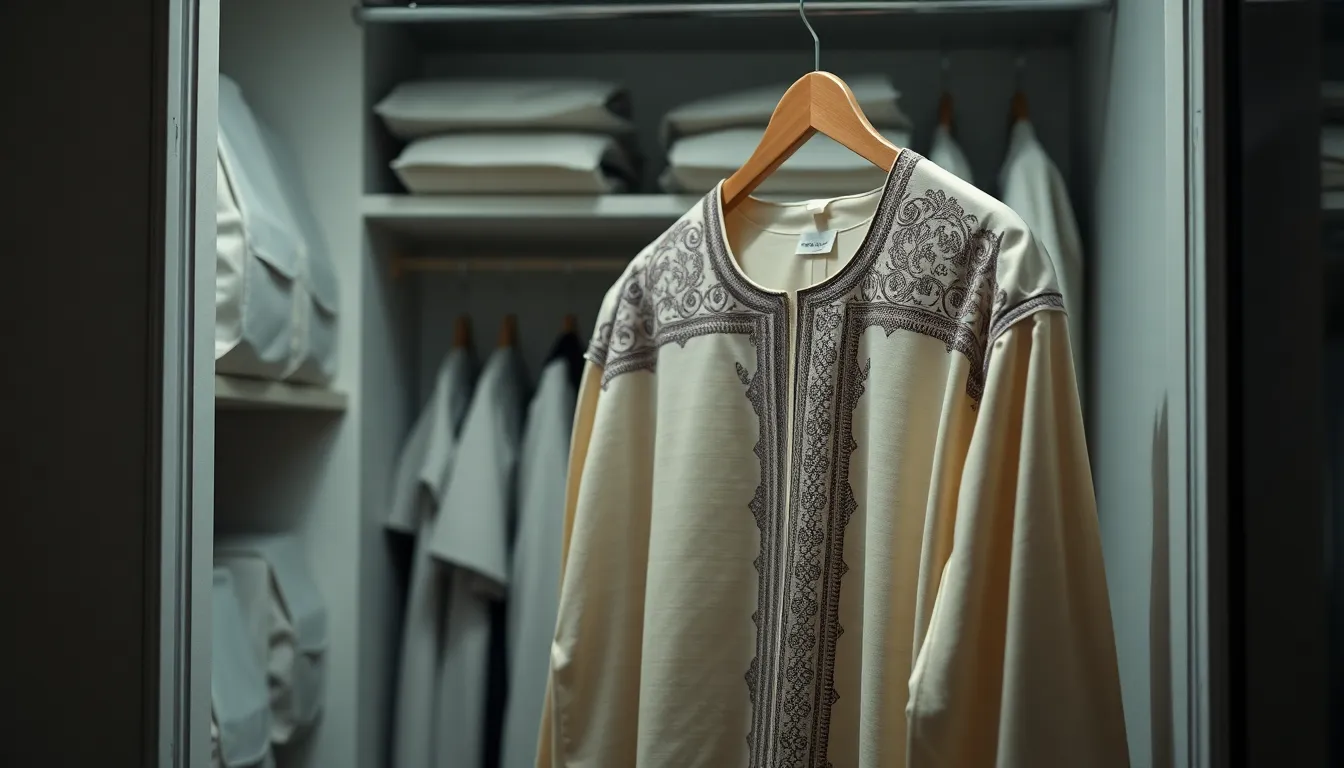
Maintaining your Arabic jubba’s pristine appearance ensures this culturally important garment continues to represent tradition and respect effectively during formal events. We’ll guide you through essential care practices that preserve both the fabric quality and intricate craftsmanship of your jubba designs.
Proper Washing Techniques
Hand washing your Arabic jubba with cold water prevents damage to delicate embroidery and maintains the garment’s characteristic stiff fit. We recommend using the delicate cycle on washing machines as an alternative, ensuring the water temperature stays cold throughout the cleaning process.
Mild detergents specifically designed for delicate fabrics protect your jubba’s high-quality materials like cotton, silk, and premium blends. Avoid bleach and harsh chemicals that degrade fabric quality and can cause permanent discoloration to your traditional garments.
Spot cleaning works best for jubbas featuring heavy embroidery, particularly those with gold thread detailing or intricate patterns. Professional dry cleaning becomes essential for luxury designs with silk embroidery or complex decorative elements that require specialized care to prevent color bleeding.
Storage Best Practices
Padded hangers maintain your jubba’s shape while preventing unwanted creases that can compromise the garment’s formal appearance. We suggest investing in quality hangers that distribute weight evenly across the shoulders and sleeves.
Cool, dry storage areas away from direct sunlight protect your jubba from fabric discoloration and material deterioration over time. Closets with consistent temperature control work best for preserving both traditional white cotton jubbas and colorful regional variations.
Breathable garment bags shield your Arabic jubba from dust accumulation and pest damage without trapping moisture that could lead to mildew or fabric weakening. These protective covers prove especially important for luxury jubbas with silk fabrics or designer embellishments.
Wrinkle Prevention Methods
Low to medium heat settings on your iron protect embroidery details and fabric surfaces when removing creases from your jubba. We always recommend using a pressing cloth between the iron and your garment to prevent direct heat damage to decorative elements.
Steam treatment offers the gentlest approach to wrinkle removal, minimizing risk to delicate fabrics while effectively smoothing both cotton blends and premium materials. Handheld steamers work particularly well for quick touch-ups before formal occasions.
Adequate closet spacing prevents excessive creasing by allowing your jubba to hang freely without compression from neighboring garments. Proper organization ensures your traditional and modern jubba designs maintain their intended silhouette between wears.
Conclusion
The Arabic jubba remains a testament to the enduring power of cultural fashion that transcends time and trends. We’ve seen how this remarkable garment adapts to every aspect of modern life while preserving its spiritual and cultural essence.
Whether you’re drawn to traditional silhouettes or contemporary interpretations your jubba choice reflects both personal style and cultural pride. The investment in quality fabrics and proper care ensures these garments will serve you well for years to come.
We encourage you to explore the diverse industry of jubba designs and find the styles that resonate with your lifestyle and values. With proper fitting and thoughtful selection your jubba becomes more than clothing—it becomes a bridge between heritage and modernity.
Frequently Asked Questions
What is an Arabic jubba and how is it worn today?
An Arabic jubba is a traditional loose-fitting robe worn by men that has evolved from purely traditional attire to a modern fashion statement. Today’s jubbas blend cultural heritage with contemporary style, featuring innovative cuts, premium fabrics, and intricate embellishments. They’re versatile enough for both formal occasions like weddings and casual daily wear, allowing men to express their cultural identity while adapting to modern lifestyles.
What are the most popular traditional Arabic jubba styles?
The most popular traditional styles include the white cotton jubba, known for its simplicity and spiritual significance; the beige linen jubba, offering sophisticated earth tones; and the navy blue formal jubba for professional settings. These classic designs emphasize quality construction and styling versatility, ensuring they honor cultural traditions while remaining relevant in modern wardrobes.
How do modern Arabic jubbas differ from traditional designs?
Modern Arabic jubbas feature slim-fit styles that offer a more flattering silhouette while preserving traditional modesty values. Contemporary designs include designer collar variations, fusion embroidery patterns combining traditional motifs with modern elements, and streamlined cuts suitable for both business and social gatherings. These updates make jubbas more adaptable to contemporary lifestyles without compromising cultural authenticity.
What should I wear for special occasions like weddings or Eid?
For special occasions, choose formal Arabic jubbas with intricate tailoring and premium fabrics. Wedding jubbas feature subtle embellishments that enhance elegance, while Eid jubbas often showcase vibrant patterns and celebratory colors. For business meetings, opt for clean lines and solid colors that project professionalism while maintaining cultural respect and authenticity.
Are there casual Arabic jubba options for everyday wear?
Yes, casual Arabic jubbas are designed for daily life integration while maintaining cultural significance. They feature lightweight summer fabrics like cotton and linen for breathability, short-sleeve options for relaxed styling, and relaxed fits for weekend comfort. These designs prioritize practicality and extended wear comfort during informal settings without compromising dignity.
What makes luxury Arabic jubbas special?
Luxury Arabic jubbas represent the pinnacle of craftsmanship, featuring silk embroidered designs with intricate patterns, gold thread detailing for status and sophistication, and high-end fabric combinations. These premium garments combine traditional motifs with modern design elements, ensuring comfort, durability, and refined appearance suitable for the most formal occasions.
How do Arabic jubba styles vary by region?
Regional variations reflect distinct cultural preferences and local traditions. Saudi Arabian jubbas feature classic straight cuts known for simplicity and versatility. Emirati kanduras are characterized by collarless designs and unique fasteners. Moroccan djellabas showcase ornate patterns and rich embroidery reflecting North African aesthetics, while some regions prefer flared designs for added elegance.
What colors are appropriate for Arabic jubbas?
Arabic jubba colors fall into three categories: earth tone palettes (beige, olive green) for modesty and sophistication; bold statement colors (blue, striped designs) for contemporary expression; and monochromatic choices (white, black) for timeless elegance. The choice depends on the occasion, personal preference, and cultural context of wear.
Which fabrics are best for Arabic jubbas?
Cotton blends provide comfort, durability, and breathability for year-round wear. Linen is the premium choice for hot climates due to its lightweight and quick-drying properties. Synthetic performance materials offer modern durability and easy care, though they’re best used as complements to traditional fabrics like cotton and linen.
How should an Arabic jubba fit properly?
Proper fit combines traditional elegance with personal comfort. Traditional loose fit standards prioritize comfort and cultural authenticity with generous cuts. Modern customized options blend traditional aesthetics with contemporary tailoring for a refined silhouette. Custom fitting ensures the perfect jubba tailored to individual preferences while maintaining appropriate modesty and cultural respect.
How do I properly care for my Arabic jubba?
Proper care preserves appearance and craftsmanship through correct washing techniques, proper storage practices, and wrinkle prevention methods. Follow fabric-specific washing instructions, store jubbas in breathable garment bags, and use appropriate pressing techniques. Regular maintenance ensures jubbas remain in pristine condition and continue representing tradition and respect during formal events.
